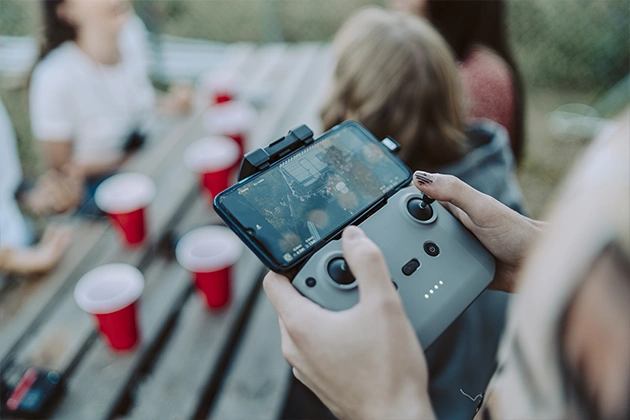In the ever-expanding mobile world, a profound transformation has reshaped the landscape of entertainment, bringing forth an era where gaming transcends traditional boundaries and permeates every facet of daily life. What began as simple, pixelated diversions on early feature phones has blossomed into a multi-billion dollar industry, boasting complex ecosystems of competitive esports and global communities. This evolution, marked by groundbreaking technological advancements and shifting user demands, can be vividly traced from the localized appeal of games like “real teen patti” to the stratospheric global phenomenon of titles such as Free Fire. The journey reflects not just a change in gaming preferences but a fundamental shift in how we interact with digital content, demonstrating the mobile device’s unparalleled power as a gateway to immersive experiences.
The genesis of mobile gaming was humble, largely constrained by the nascent capabilities of early mobile phones. Before the advent of sophisticated smartphones, gaming on the go was synonymous with built-in classics like Snake or basic Java-based applications. These early experiences, though primitive by today’s standards, laid the groundwork for a future where entertainment would be universally accessible in the palm of one’s hand. With the dawn of the smartphone era and the proliferation of app stores, a new frontier opened up, allowing developers to create and distribute a vast array of games directly to consumers. It was during this period that games appealing to specific cultural niches began to thrive, none more so than “real teen patti” in the Indian subcontinent. These digital renditions of the popular card game quickly gained immense traction, offering a convenient and often free way for enthusiasts to engage in their beloved pastime. Titles like “Teen Patti Vungo” emerged as frontrunners, capturing the hearts of millions with their straightforward gameplay, social features that allowed friends to play together, and the familiar thrill of the card table replicated on a digital screen. The success of “real teen patti” apps underscored a crucial insight: mobile gaming’s initial boom was fueled by its accessibility and its ability to tap into existing cultural activities, making digital entertainment a seamless extension of real-world social interaction. These early adopters, engaging with simple, culturally relevant games, unknowingly paved the way for the sophisticated gaming experiences that would soon follow, establishing the mobile phone as a legitimate gaming platform.
As mobile technology advanced, so too did the complexity and diversity of games available. The transition from 2G to 3G and then 4G connectivity, coupled with significant improvements in smartphone processors, graphics capabilities, and battery life, unlocked new possibilities for developers. No longer limited to casual card games or simple puzzles, mobile gaming began to diversify into a multitude of genres. Puzzle games like Candy Crush Saga, endless runners like Temple Run, and even more intricate strategy games started dominating the app store charts. This mid-evolutionary phase saw the rise of the freemium model, where games were free to download but offered in-app purchases for virtual currency, cosmetic items, or gameplay advantages. This monetization strategy proved incredibly lucrative, allowing developers to invest more in higher-quality graphics, richer storylines, and more engaging gameplay loops. The mobile device was rapidly transforming from a mere communication tool into a powerful, multifaceted entertainment hub. Beyond gaming, these devices became indispensable for consuming all forms of digital content. Users could stream live events, from the excitement of following “football at the summer olympics brackets” to tuning into the “copa america 2024 broadcast in india,” all from their pocket-sized screens. This convergence of entertainment options on a single device further solidified the mobile phone’s central role in the daily lives of billions, setting the stage for the next major leap in mobile gaming: the emergence of competitive esports on a global scale.
The most dramatic phase of mobile gaming’s evolution arrived with the proliferation of powerful smartphones capable of rendering console-quality graphics and supporting complex online multiplayer interactions. This technological leap paved the way for the explosion of genres like Battle Royale and Multiplayer Online Battle Arena (MOBA) on mobile platforms. Among these, Free Fire rapidly ascended to become a global sensation, particularly in emerging markets across Southeast Asia, Latin America, and India. Its remarkable success can be attributed to several key factors that perfectly capitalized on the evolving mobile world. Free Fire was designed to be highly accessible, running smoothly even on lower-end smartphones, which significantly lowered the barrier to entry for millions of potential players. Its fast-paced, 10-minute battle royale matches provided quick, intense bursts of entertainment, ideal for on-the-go gaming. Crucially, Garena, Free Fire’s developer, demonstrated an exceptional understanding of player engagement through consistent updates, new characters, events, and a vibrant community focus. The distinctive “free fire gaming logo” became a ubiquitous symbol of competitive mobile gaming, recognized by a vast global audience.
The rise of Free Fire marked a pivotal moment, transforming mobile gaming from a casual pastime into a legitimate, professional esport. The game fostered a massive competitive ecosystem, complete with professional teams, dedicated leagues, and substantial prize pools that rivaled those of traditional PC and console esports. Tournaments like the Free Fire World Series attracted millions of concurrent viewers, demonstrating a level of global engagement and competitive fervor previously reserved for events like a traditional World Cup. Players and teams became household names, revered by their fan bases and attracting significant sponsorships. This transition to esports elevated mobile gaming’s status, proving that high-stakes competition and strategic depth were not exclusive to larger platforms. The global reach of Free Fire, in particular, showcased how mobile gaming could bridge geographical divides, creating a shared competitive space for players from diverse backgrounds. This era solidified the mobile phone’s position not just as a device for playing games, but as a platform for professional careers, fostering new forms of entertainment consumption and community building that were unimaginable just a decade prior.
Looking ahead, the trajectory of mobile gaming promises continued innovation and deeper integration into the fabric of our digital lives. The rollout of 5G networks and advancements in cloud gaming technology are set to revolutionize how mobile games are experienced, potentially allowing for console-quality titles to be streamed directly to smartphones with minimal latency, eliminating the need for high-end local hardware. Augmented Reality (AR) and Virtual Reality (VR) on mobile devices are also on the cusp of significant breakthroughs, offering new layers of immersion and interactive experiences that blend the digital with the physical world. Cross-platform play is becoming increasingly common, blurring the lines between mobile, PC, and console gaming, fostering a more unified gaming community. The “mobile world” continues to be the epicenter of these advancements, adapting to new technologies and user expectations with remarkable agility. The future will likely see an even greater blurring of the lines between casual and hardcore gaming, with mobile devices serving as the primary gateway for all types of interactive entertainment. From the simple, culturally resonant beginnings of “real teen patti” applications to the global esports dominance of titles like Free Fire, mobile gaming has not only evolved in its technological sophistication but also in its cultural impact. It has democratized access to entertainment, created new economic opportunities, and forged global communities. The journey is far from over, with mobile gaming poised to continue its rapid evolution, shaping the future of entertainment in ways we are only just beginning to imagine. Its story is a testament to human ingenuity and the boundless potential of digital innovation in the palm of our hands.










